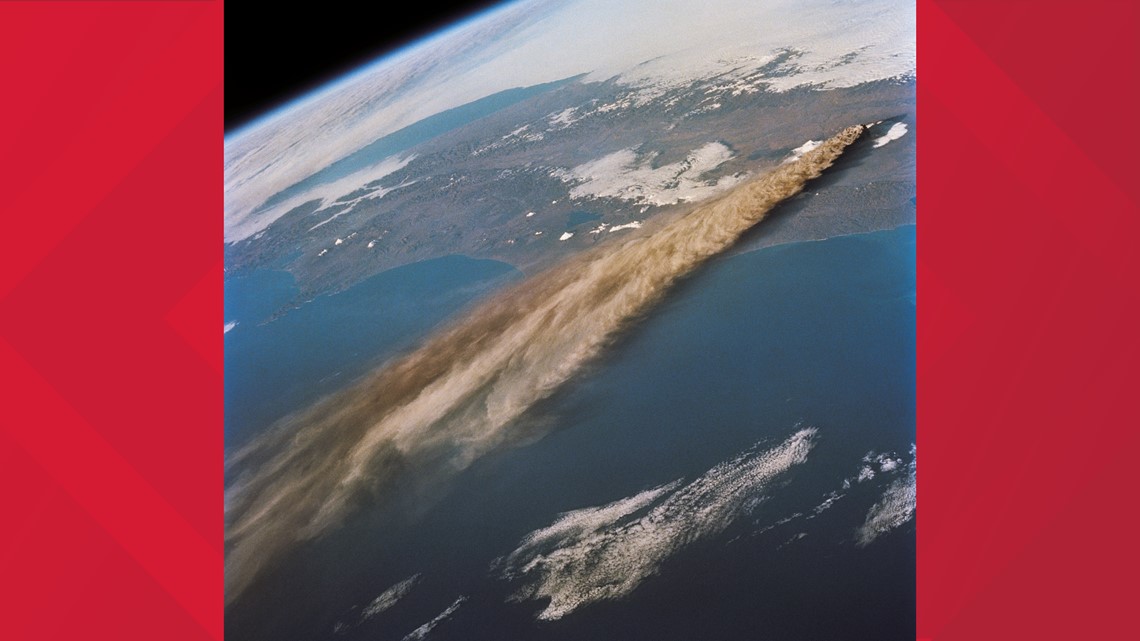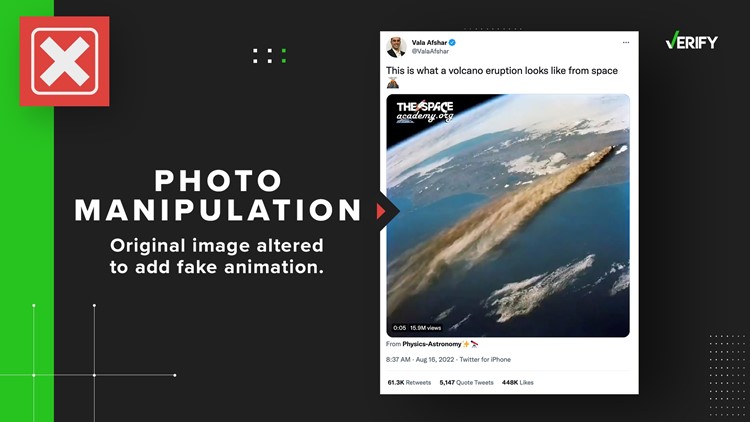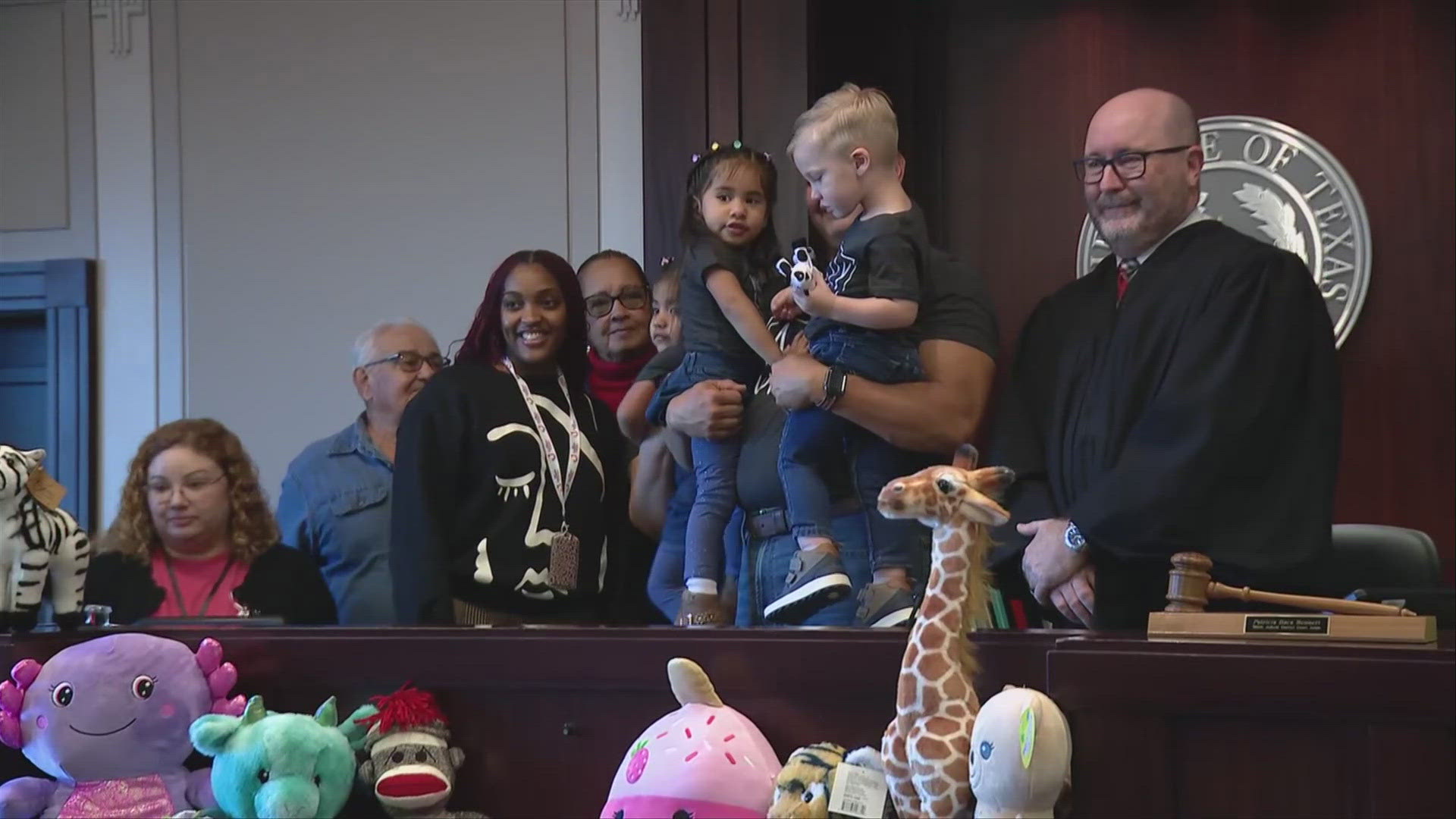“This is what a volcano eruption looks like from space,” wrote marketer Vala Afshar in a tweet liked 370,000 times. His Aug. 16 tweet was referring to a six-second video viewed at least 13 million times on Twitter alone.
The video shows a volcano on a peninsula with the curvature of the Earth visible in the background. It’s emitting a moving smoke plume. There is a shadow visible beneath half of the smoke plume, and the clouds visible in the video do not move.
Many of the replies to the tweet questioned if the video was fake. Some said the video must have been made with computer-generated graphics, while others posted what they claimed to be real videos of volcanic eruptions seen from space.
THE QUESTION
Is this a real video of a volcanic eruption as seen from space?
THE SOURCES
- NASA
- Ed Venzke, a volcano data researcher at the Global Volcanism Program
- Steven Sobieszczyk, a spokesperson for the United States Geological Survey (USGS) and a hydrologist who has also worked for NASA
- National Oceanic Atmospheric Administration (NOAA)
THE ANSWER
No, this is not a real video of a volcanic eruption as seen from space. It’s an animation someone created using a NASA photograph.
WHAT WE FOUND
The viral video is an animation placed over a real photo of an erupting volcano that was taken by an astronaut. The video’s creator animated the volcano’s smoke plume, but left everything else in the photo as is. There is no evidence the video was created by NASA or any other space agency.
“The original photo is so spectacular that it seems ridiculous to make a weird video animation,” said Ed Venzke, a volcano data researcher at the Global Volcanism Program.
The original photo can be found on NASA’s Video and Image Library, NASA’s Johnson Space Center Flickr account and in a NASA Earth Observatory article.


“I checked with our volcano observatory and they confirmed. That is not a live video,” said Steven Sobieszczyk, a spokesperson for the United States Geological Survey (USGS) and a hydrologist who has also worked for NASA. “I've done my share of illustration work and that is a visualization using an ‘animate your photograph’ app or software.”
According to NASA, the original photo is of the Kliuchevskoi volcano in Russia’s Far East and was taken in 1994 by an astronaut aboard the Space Shuttle Endeavour. The photograph was taken about 132 miles above Earth’s surface.
Venzke said that big volcano plumes can look like they do in the animation when there is a hard wind that blows the smoke horizontally, instead of straight up. But the way the animation depicts the smoke plume has a few inaccuracies.
“Even if that was a real video, I would have said it looks accelerated,” Venzke said, referring to the speed at which the smoke plume in the video moves. Not only is the plume moving too fast, it’s also far too consistent.
Venzke explained that there would need to be big, pulsating explosions — what he called “pulses” — to keep feeding the plume so it continues to rise up from the volcano. He said that evidence of older “pulses” are visible along the far end of the plume, but said they aren’t regular enough, nor are they actively repeating during the animation.
It’s easier to see what Venzke means with a visual. In April 2021, National Oceanic Atmospheric Administration (NOAA) satellites captured imagery of a Caribbean volcano’s eruption. The smoke plume in that eruption is blown in one direction by the wind, just like the eruption in the animation, but the plume is fed by several “pulses” from the volcano just as Venzke described. This is easiest to see in the infrared view that begins 36 seconds into the video.
Sobieszczyk echoed Venzke’s belief that the smoke plume moves far too fast than any real smoke plume could.
“For the eruption cloud to move that fast in an actual video, it would have to travel faster than the spacecraft,” Sobieszczyk said. He noted that the Space Shuttle Endeavour traveled at over 17,000 mph, whereas when ash reaches the atmosphere, it must travel on atmospheric currents that reach maximum speeds of 275 mph.
There are a few other ways to tell the video is an edit of a photo that don’t require much knowledge of volcanoes to identify. The clouds and shadows are totally stationary in the video, as is the camera. But in real video footage recorded from space, a shuttle would either continue to fly higher above the Earth, or it would be orbiting around Earth, so it would be impossible for these parts of the video to appear perfectly still.
Venzke noted that most “video” of eruptions recorded from space are actually just animated GIFs composed of photo image sequences. Satellite cameras typically take photographs, and astronauts rarely get such perfect opportunities to record volcanic eruptions with their personal cameras.
One example of a satellite “video” of a volcano eruption is of the January 2022 eruption of the Hunga Tonga-Hunga Ha’apai volcano, which experts say is one of the largest eruptions ever captured from space. The satellite video of the eruption is actually a timelapse of photos, and satellite radar shows how the plume quickly dissipated without further eruptions to fuel the plume.
“Honestly, my main problem with this is that it doesn’t have the volcano name or date shown on the video, which means that it will get re-used by others purporting to show some other eruption,” Venzke said. “Accurately showing real activity is important for hazard awareness and mitigation, so seeing things like this attributed to some other volcano can be harmful misinformation.”
More from VERIFY: Viral tweet incorrectly identifies clearest lake in the world



